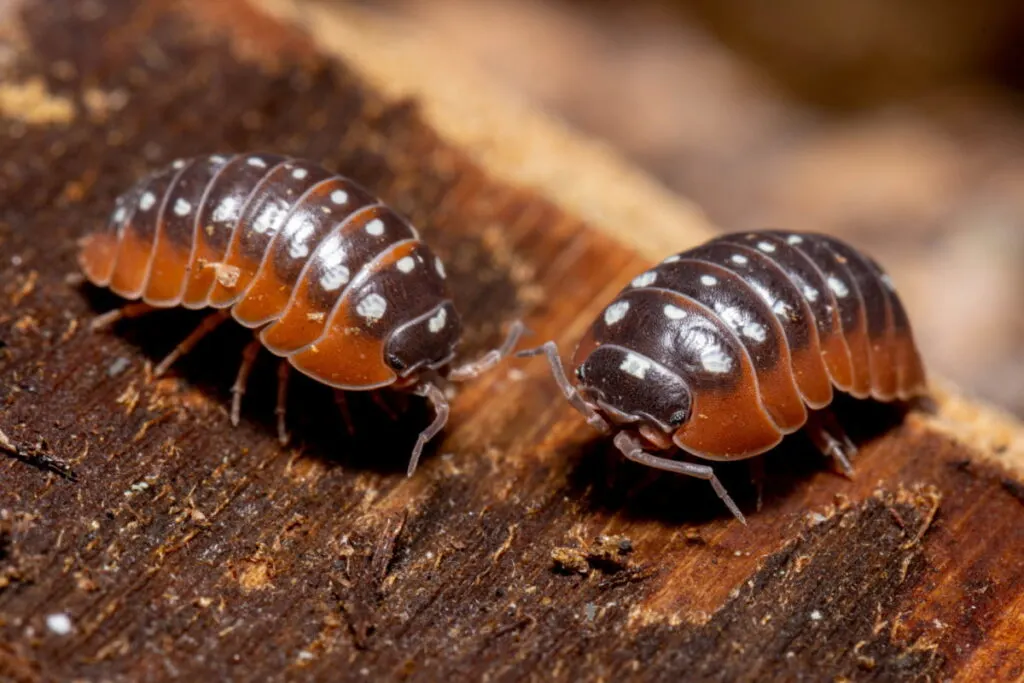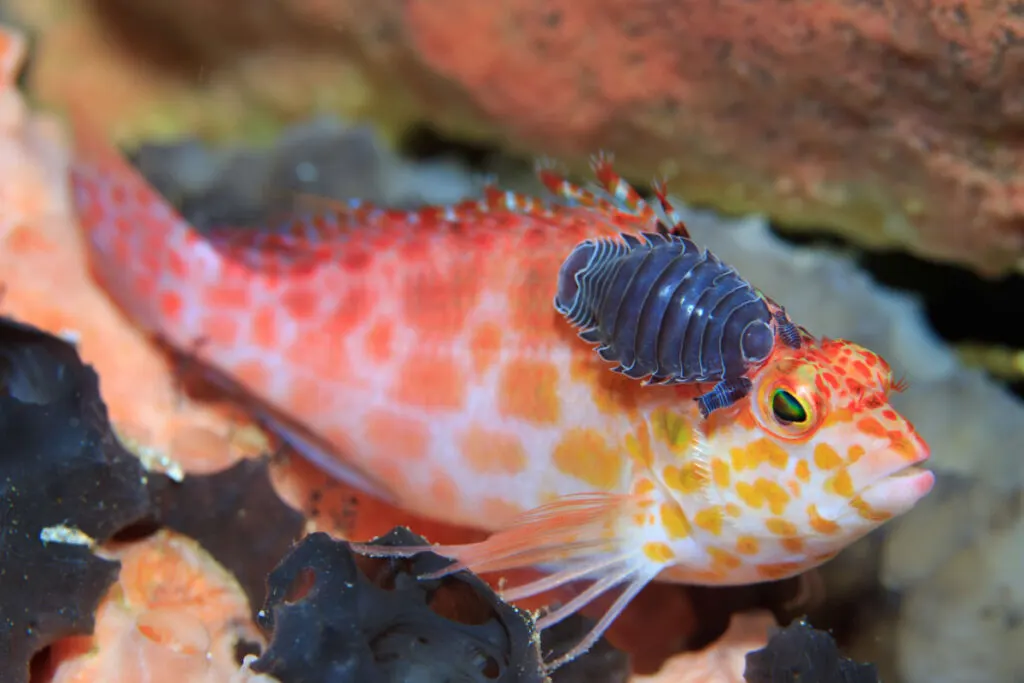Table of Contents
What are Isopods?
Also known as woodlice or pill bugs, isopods are small land crustaceans that consume dead organic matter, making them an important part of the ecosystem.
The name “Isopod” is coined from Greek, which translates to “equal foot”, a significant factor for isopods since they’ve got the same number of legs on both sides of their body.
There are many types of isopods, but the commonly bred species are Nagurus, Porcellio, Trichorhina, and Armadillidium. They often make a great treat for reptile and amphibian pets like geckos, lizards, and frogs.
Although you can buy isopods from local pet stores, you can also breed them in your home for your pets. Interestingly, isopods have breeding seasons, and within those seasons, they breed at a very high rate. Regardless of their rate of breeding, do isopods lay eggs? Let’s find out.
Do Isopods Lay Eggs?
Isopods produce eggs but do not lay them.
Instead, a female isopod carries its eggs around in an egg pouch called a marsupium.
Although it is a common thing for crustaceans to lay eggs, isopods don’t require an aquatic environment for them to lay eggs.
The marsupium is filled with a soft fluid that helps in egg brooding, which can last for approximately three to five weeks.
How Does Fertilization Take Place?
When mating season comes, male isopods will often follow the female isopods around in a bid to get close enough for insemination to take place.
When a male successfully finds a mate, the male will mount and deposit sperm on the female’s two genital extensions, each of which is connected to an ovary by an oviduct. The sperm is deposited by the males in the form of large white balls and is kept at bay in the oviduct till the oocytes (eggs) are formed.
The oocytes are fertilized when passing through the sperm balls in the oviduct, forming eggs which are then stored in the marsupium.
Interestingly, the remaining sperm is stored for future fertilization of the next batch of eggs in a sperm junction between the oviduct and the ovary called the spermatheca. Depending on the breed of the isopod, eggs and embryos are brooded in the marsupium for three to five weeks.
As soon as the young ones emerge from the marsupium, the sperm reserves are used to fertilize the next batch of eggs, which happens about two weeks later. At this time, most females won’t be able to receive sperm because the marsupial plates have extended to cover the receiving genital extensions.

Development from Eggs to Adulthood
After fertilization, the eggs are kept in the marsupium where they mature into embryos and soon hatch into baby isopods.
However, they do not leave the marsupium till they are old enough to maneuver on their own. If you are observant enough, you will easily recognize a pregnant isopod, and prepare the necessary space for the coming newborns. When expectant, the swollen marsupium(s) is visible on the underside of the female.
After three to five weeks, the baby isopods emerge from the marsupium, often looking a little lighter in color compared to the adults.
Their shell, which forms in two phases, is also relatively smooth and soft, making them highly sensitive to moisture and dryness.
Depending on the breed, each marsupium can carry from about 100 to 160 eggs. As soon as they mature enough to leave the egg pouch, they will steadily grow, subsequently hardening their shells and intensifying their color.
After 12 weeks, some breeds can be sexually mature and active, while others might need some more time.
Caring for Isopods
Taking good care of isopods does not only entail the environment you provide but also how you handle it. Once all the possible causes of dangers are eliminated, you should provide the isopods with as much comfort as possible.
If you plan on sourcing your isopods from the wild, beneath dead tree bark and stones would be a great place to start. Using your fingers or a soft brush to guide the isopods into a safe can for transportation, aim at about twenty to thirty isopods for a gender-balanced sample. Sourcing from a pet store, on the other hand, will be easier but expensive.
Once you have your colony of isopods in a suitable tank, you should focus next on the ideal environment for your isopods.
An ideal tank should be moist with enough hiding places for your isopods. Therefore, regularly use a spray bottle to moisten the tank, making the soil dump enough to the touch but not too wet to hold water.
However, remember to leave one side of the tank dry for the isopods to regulate the moisture they need. Secondly, provide hiding places for your isopods. Tree bark, leaves, and even moss provide the best hiding spots for the isopods, besides playing a double role as their food.
Isopods should also have a constant supply of food, helping promote their reproduction and development. Foods fed in smaller pieces such as carrot shavings, fish flakes, small pieces of lettuce, and dust food, are good for younger isopods because of their higher rates of absorption as compared to coarser feeds.
Dead plant matter such as leaves are also an important part of their feeds. Remember to occasionally add leaves every two to three weeks. Over time, your substrate will also get weary and dirty, so you will have to replace the substrate in the entire tank every 6 – 8 months.

Sources of Danger for Young Isopods
Baby isopods are tiny, having a length of approximately two millimeters, implying that in a regular isopod tank setting, many things can easily turn it into a dangerous zone.
The major causes of alarm to an isopod include:
Living with enemies. If possible, isopods should not share their tank with any other animal species if they are to reproduce unbothered. Besides, baby isopods are tiny and fragile, and it would be a risk to hold them with other animals.
Heavy pieces of wood or stones can also cause harm to the isopods. Although they benefit from their hideouts, these can easily become death instruments for isopods, especially if they are younger and not yet strong enough to evade or pull off from the heavier bits of substrate.
Unlike adults, baby isopods are more sensitive to the environment, and the ideal environment for the adults might be a little harsh on them. It is, therefore, necessary to control the moisture levels and temperature to fit the young ones too.
With all variables kept constant, it doesn’t mean that all the baby isopods will survive to maturity. Still, natural selection applies to these little creatures too, and the best will thrive to maturity.
However, you can always do more to improve the environment of your isopods and promote the development of the young isopods.

Conclusion
Isopods produce eggs but do not lay them. They carry their fertilized eggs in their marsupium till they hatch and the babies are old enough to move around. These land crustaceans are often harvested and bred for secondary purposes such as being treats for pet reptiles.
Resources
- https://media.vwr.com/emdocs/docs/scied/Land_Isopods.pdf
- https://insektenliebe.com/en/baby-isopods-insights-to-succesful-isopod-keeping/
- https://www.wikihow.com/Breed-Isopods
- https://www.neherpetoculture.com/isopodcare
- https://entnemdept.ufl.edu/creatures/MISC/Armadillidium_vulgare.htm
- http://bioweb.uwlax.edu/bio203/f2013/miller_kels/reproduction.htm
- https://academic.oup.com/jcb/article/27/2/217/2548225
